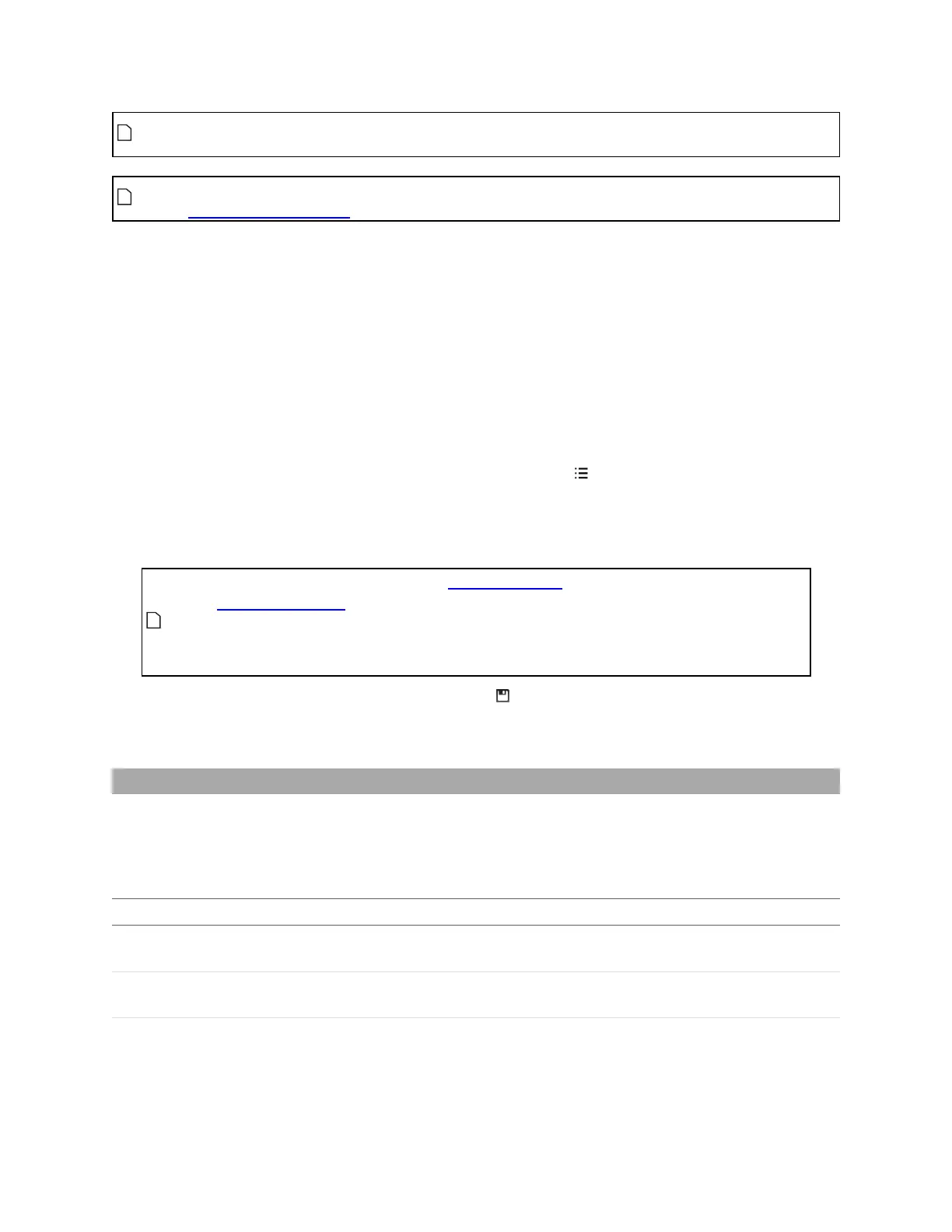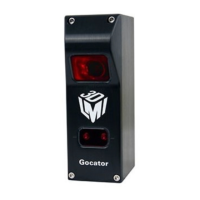Gocator Line Profile Sensors: User Manual
Gocator Web Interface • 129
Setting Angle X or Angle Z, and to a lesser extent Y Offset, to a non-zero value
increases CPU usage when scanning, which reduces the maximum scan speed.
Artifacts may appear in scan data when Angle Z or Angle X is set to a non-zero value if
encoder trigger spacing is set too high (resulting in a low sampling rate).
To configure transformation settings:
1. Go to the Scan page.
2. Choose a mode other than Video mode in the Scan Mode panel.
If Video mode is selected, you will not be able to change the settings.
3. Expand the Sensor panel by clicking on the panel header.
4. Click the button corresponding to the sensor you want to configure.
The button is labeled Top, Bottom, Top-Left, or Top-Right, depending on the system.
Transformations can be configured separately for each sensor.
5. Expand the Transformations area by clicking on the expand button .
See the table above for more information.
6. Set the parameter values.
See the table above for more information.
The Y offset, X angle, and Z angle transformations cannot be non-zero when
Uniform Spacing is unchecked. Therefore, when aligning a sensor using a bar
alignment target with Uniform Spacing unchecked, set the Degrees of
Freedom setting to X, Z, Y Angle, which prevents these transformations from
being non-zero.
7. Save the job in the Toolbar by clicking the Save button .
8. Check that the transformation settings are applied correctly after the sensor is restarted.
Exposure
Exposure determines the duration of camera and light-source on-time. Longer exposures can be helpful
to detect light on dark or distant surfaces, but increasing exposure time decreases the maximum speed.
Different target surfaces may require different exposures for optimal results. Gocator sensors provide
three exposure modes for the flexibility needed to scan different types of target surfaces.
Exposure Mode Description
Single Uses a single exposure for all objects. Used when the surface is uniform and is the same for
all targets.
Dynamic Automatically adjusts the exposure after each frame. Used when the target surface varies
between scans.
Multiple Uses multiple exposures to create a single profile. Used when the target surface has a varying
reflectance within a single profile (e.g., white and black).
